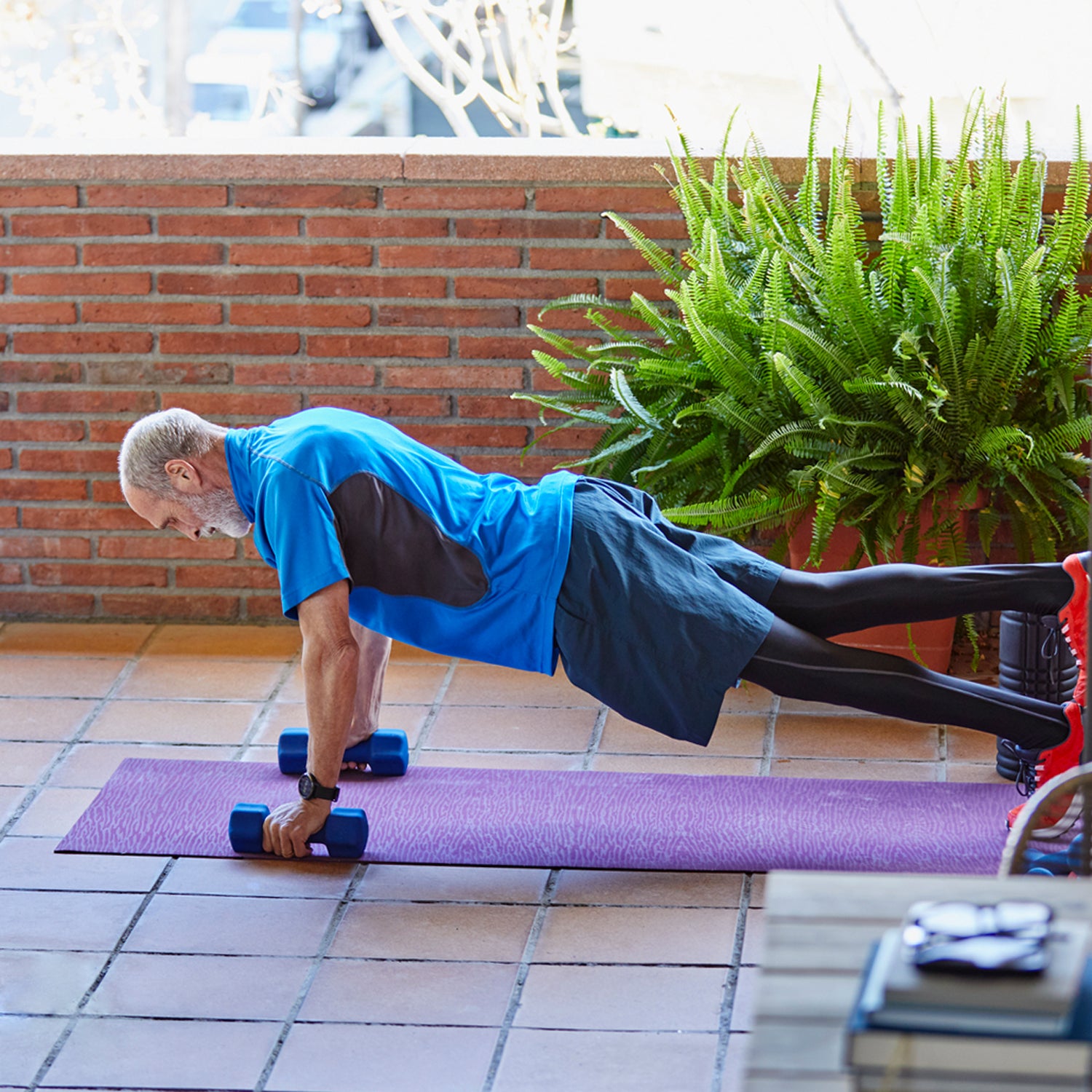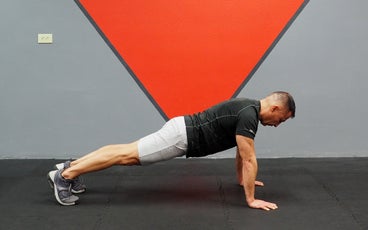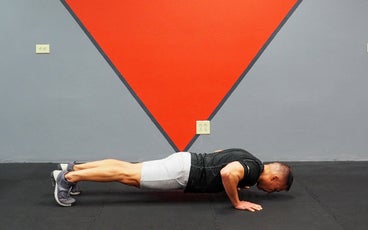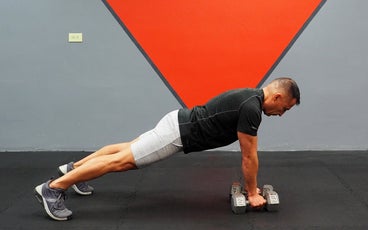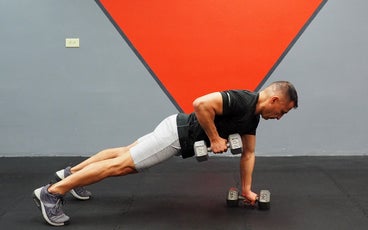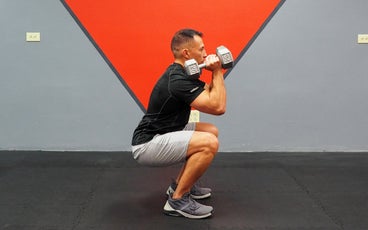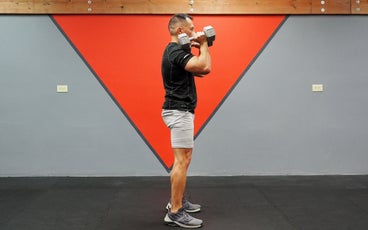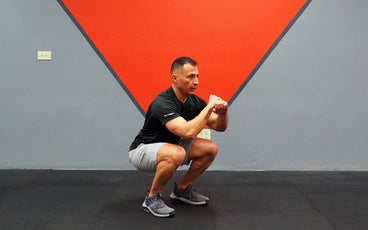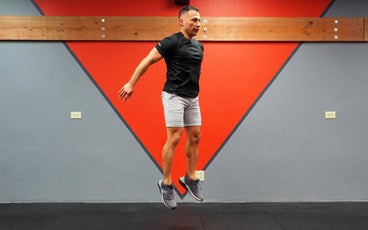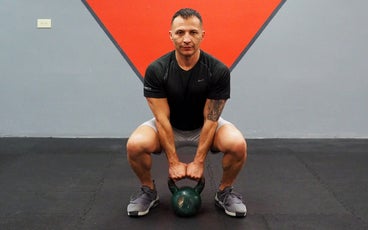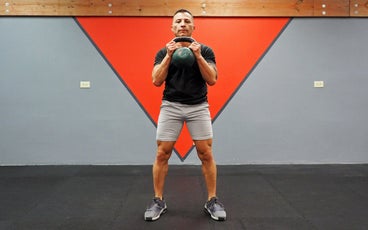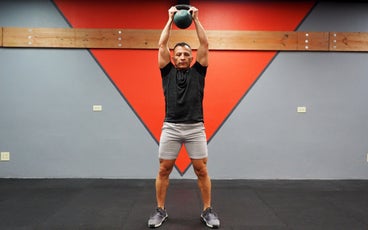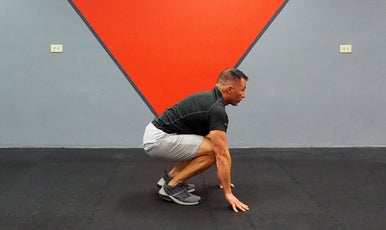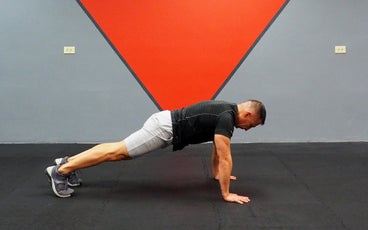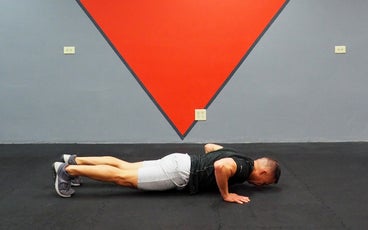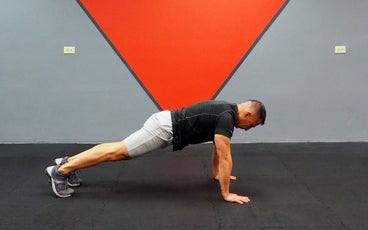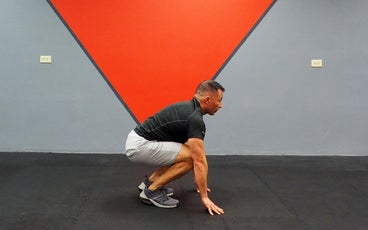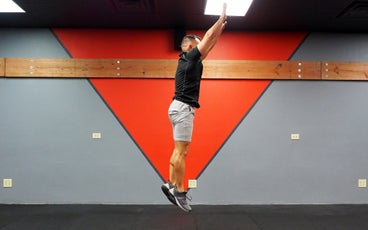High-intensity interval training (HIIT)╠řis a quick and effective way to combine cardio with strength work.╠řItÔÇÖs also╠řeasy to personalize based on your goals and fitness level.╠řThe overarching idea behind HIIT╠řis simple: try hard, rest, repeat. ItÔÇÖs characterized by short bursts of near-maximum exertion (around 90 percent), followed by periods of rest, explains╠ř, a fitness instructor and co-owner of╠ř in New Mexico.╠řHill sprints, four-by-fours at the climbing gym, and an all-out interval workout in the pool are all examples of HIIT, but╠řitÔÇÖs probably most familiar as a circuit workout with minimalist moves.
Gurule, who has been teaching HIIT-style classes for 14 years, recommends the workout below, which you can do at home with minimal equipment. Complete this as a circuit: perform each exercise for 20 to 30 seconds, moving from one to the next with no rest in between. Then rest for two to three minutes between each set. Aim for two to six rounds in total.
Warm up first by going for a jog, jumping rope, or riding a stationary bike for 15 minutes until you begin to break a light sweat. During the workout, move quickly and push╠řyourself, but choose a pace and/or weight╠řthat allows you to complete each exercise at a consistent cadence with good form. Progress by adding more rounds to the circuit╠řor by increasing the weight, pace, or duration of each exercise.
Tools Needed
- Â┘│▄│ż▓˙▓˙▒▒˘▒˘▓§╠ř
- Kettlebell
The Moves
Push-Up
What it does: Primarily strengthens the chest, triceps, and shoulders, as well as the core and back muscles.
How to do it: Start in a╠řstandard push-up position, with your arms straight, hands flat on the floor below your shoulders, and feet together or no more than 12 inches apart A wider stance is╠řeasier for stability.╠řMaintain a rigid plankÔÇöyour body should form a straight line from your head to your heels. Inhale as you bend your elbows,╠řkeeping╠řthem close to your sides to emphasize the triceps or out in a T-shape to bias the pecs. Lower your body until itÔÇÖs roughly parallel to the floor. Then exhale as you push back up to the starting position for one repetition. Keep your core engaged throughout the entire movement.
Renegade Row
What it does: Primarily strengthens the upper back, shoulders,╠řcore muscles, and glutes.
How to do it: Start in a push-up position, with your hands on dumbbells below your shoulders and your feet roughly two feet apart. Engage your core, pull a dumbbell up to your armpit, then return it to the floor slowly. Keep your hips and shoulders level throughout the movement. If your hips or torso rotate as you lift the dumbbell, widen your stance╠řor choose a lighter weightÔÇöproper plank form is key to engaging the target muscles. Alternate arms each rep.
Dumbbell Squat
What it does: Primarily strengthens╠řthe quads and glutes╠řand engages╠řthe calves,╠řhamstrings, core,╠řback, and╠řshoulders.
How to do it: Grab a pair of dumbbells and hold them just above shoulder level,╠řwith your elbows pointed forward and bent to around 90 degrees (the backs of the dumbbells can rest on your shoulders). Stand with your feet hip-width apart or slightly wider and your toes either parallel or angled out to the sides. Hold your chest and head high, pull your shoulders back and down, and keep your spine stacked in a neutral position (that is, no rounding forward). Then shift your weight over your heels and lower into a squat until your thighs are parallel to the floor (or as low as you can go with good formÔÇömake sure your knees donÔÇÖt dive inward or move beyond your toes). Engage your glutes and press through your heels to stand up for one repetition.
Move slowly and with╠řcontrol.╠řProper form is key to protect the knees and back╠řand to engage the target muscles. If the exercise is too challenging, ditch the weights and cross your arms over your chest.
Bodyweight Squat Jump
What it does: Builds╠řstrength and power in the legs.
How to do it: Start in an athletic stance and lower into a squat, as described above. (Go as low as you can with good form.)╠řThen jump as high as you can. Land on your forefoot with soft knees╠řand shift your weight to your heels. Immediately lower into another squat╠řand explode upward once again. Keep a consistent pace and intensity throughout the duration without╠řcompromising form.
Kettlebell Squat, Catch, and Overhead Press
What it does: Strengthens the legs, back, core, shoulders, and arms.
How to do it: Start in a squat stance╠řwith a kettlebell between your feet. Grab the top of the handle with both hands and an overhand grip. Hold your chest and head high, pull your shoulders back and down, and keep your spine stacked in a neutral position. Then engage your glutes and press through your heels to stand up rapidly. In one fluid motion, use the weightÔÇÖs momentum to lift it to chest level. At its apex, switch your grip to the sides of the handle, then press the weight overhead until your arms are fully extended. Slowly and in control, reverse the movement to lightly tap the weight on the floor at the bottom of the squat, then repeat. Remember to drop your hips into a full squat, and lift with your legs,╠řnot from your lower back.
Burpee
What it does: The ultimate╠řfull-body exercise, the burpee╠řstrengthens the legs, core, upper back, arms, and chest, while developing╠řexplosive power and training high-intensity cardio.
How to do it: Start in an athletic stance, with your feet hip-width apart and your knees slightly bent. Crouch and place your hands flat on the floor, shoulder-width apart. Hop your feet directly behind you to straighten your legs and enter a push-up position. (To make it easier, step back one foot at a time.)╠řComplete a full push-up, as described above. Then jump your feet forward (or step one at a time) to just behind your hands. Reach your arms overhead, then jump vertically as high as you can. Land with soft knees (this marks one repetition)╠řand immediately crouch again to repeat the process. Move fluidly with purpose and no pause between stages or reps, but pay attention to form and adjust your pace accordingly.


